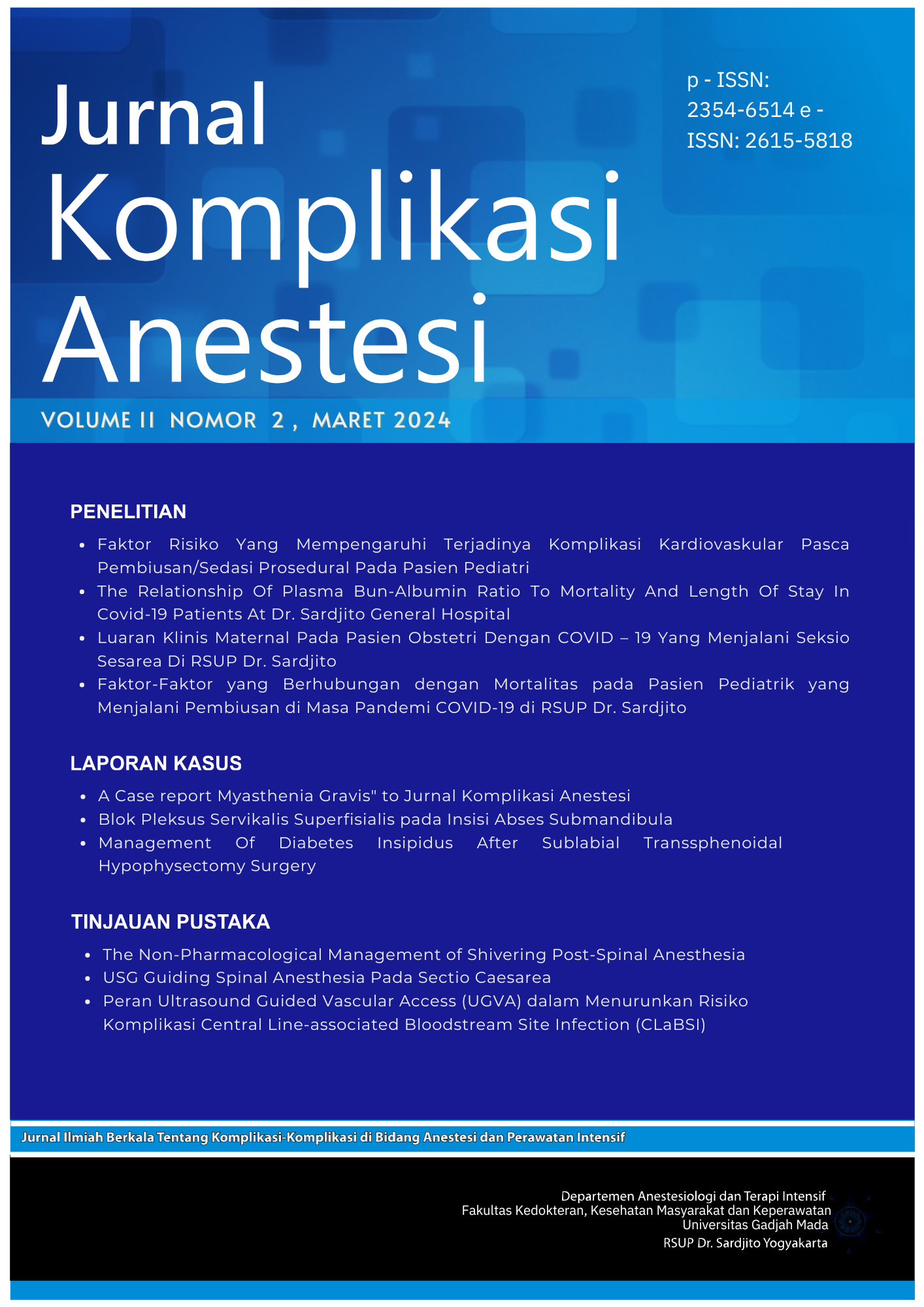USG Guiding Spinal Anesthesia pada Sectio Caesarea
Abstract
The practice of using central neuraxial block (CNB) techniques is now increasingly being done. In principle, this technique is highly dependent on the palpation of anatomical markings in bones, along with feedback from tactile sensations when inserting needles. Although anatomic landmarks are useful, they are often difficult to find or feel in patients pregnancy with obesity, changes in the patient's anatomical structure, edema in the back, and underlying spinal abnormalities or after spinal surgery. Recent years have seen increasing interest in the use of ultrasound for interventions in regional anesthesia. Ultrasound is non-invasive, safe, easy to use, can be done quickly, does not involve exposure to radiation, provides real-time images, is free of side effects, and may also be beneficial in pregnancy with obesity and abnormal spinal anatomy
Copyright (c) 2024 Dya Restu Saputra, Sudadi, Calcarina Fitriani RW

This work is licensed under a Creative Commons Attribution-NonCommercial-ShareAlike 4.0 International License.
The Contributor and the company/institution agree that all copies of the Final Published
Version or any part thereof distributed or posted by them in print or electronic format as permitted herein will include the notice of copyright as stipulated in the Journal and a full citation to the Journal.

